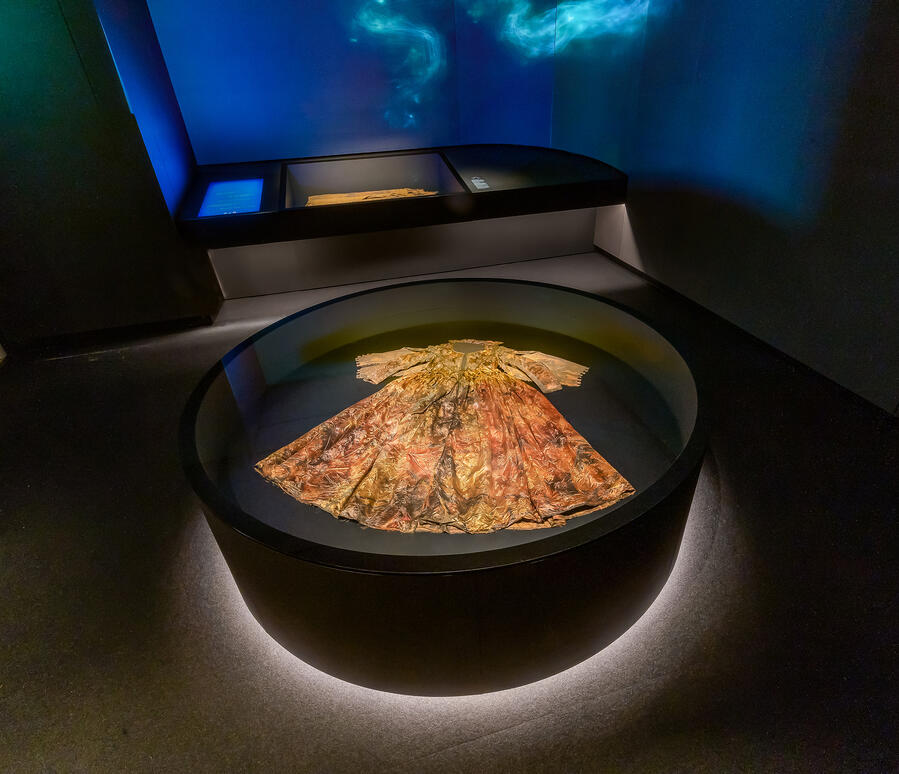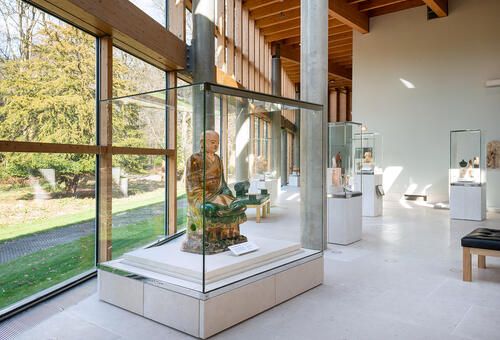The museum & the collection
On the seabed along the coast of Texel, shipwrecks have been hiding stories and secrets for centuries. A great variety of exceptional and amazingly well-preserved artefacts from these merchant vessels and warships can be admired in the Kaap Skil museum. There, illustrious tales are told by several diverse exhibitions, one of which unveils numerous exclusive and luxurious treasures from the seventeenth-century Palmwood Wreck. These valuables range from an intimate toiletry set and stylish oriental rug to delicate textile artefacts, such as a completely intact silk dress and a wedding dress adorned with silver.
Although seemingly contradictory, these artefacts have been preserved in the most favourable conditions possible: the absence of oxygen and light underneath the ocean floor ensured that the fabrics and fragile materials stayed intact for many centuries. In order to safely bring them to the surface, the same conditions had to be recreated, meaning excluding light and/or oxygen. Of course excluding light would have meant that putting these one of a kind treasures on display would be impossible. Therefore it was decided that recreating oxygen free environments would be the way forward.

The assignment & the challenges
Our advice and cooperation was sought after to develop and build what would become the largest oxygen-free showcases in the world, which would make it possible to put the maritime heirlooms on permanent display.
The main challenge was trying to find a balance between the stringent conservation needs, security & safety aspects and the intent to display the artefacts in the most pleasing way. In the past, smaller oxygen-free cases had been manufactured. However, the considerably larger proportions and design intent of this project were an unprecedented aspect. Upscaling these methods used in the past whilst adhering to the idea of designing a light presentable showcase, proved to be a very challenging technical assignment.

The solutions & the results
The key to successfully executing a research project of this nature is by establishing a good partnership/collaboration with the client. Luckily the museum was very open to our approach which proved to be hugely beneficial in successfully achieving our set out goals. Upon starting this project, we first had to build a good understanding of what the requirements were and what was actually possible. Therefore we considered it essential in our proposal that we first start a collaborative research project / design-build process to define what the entire project would look like. Once that process was done and all parameters were known, it was possible to smoothly upscale the production of the entire project.
Projects like this highlight the need for a custom approach: certain projects cannot be done according to standard project templates. A willingness to really work together is absolutely crucial. Therefore we have specifically developed a design-build approach during projects such as the Anne Frank House and Mystic Lamb displays.
We are immensely proud of the results from all the time spent and experiments conducted, as we are highly honoured to present, preserve and protect the most spectacular remains from a seabed so close-by and a time so far away.

© Museum Kaap Skil
Project
Museum Kaap Skil
Solutions
Country
Netherlands
Year
2021 - 2022
Type of museum
Historical Museum
Designer
Opera Amsterdam
Scope
1 normal & 5 oxygen-free showcases
More info
Photos: © Museum Kaap Skil



